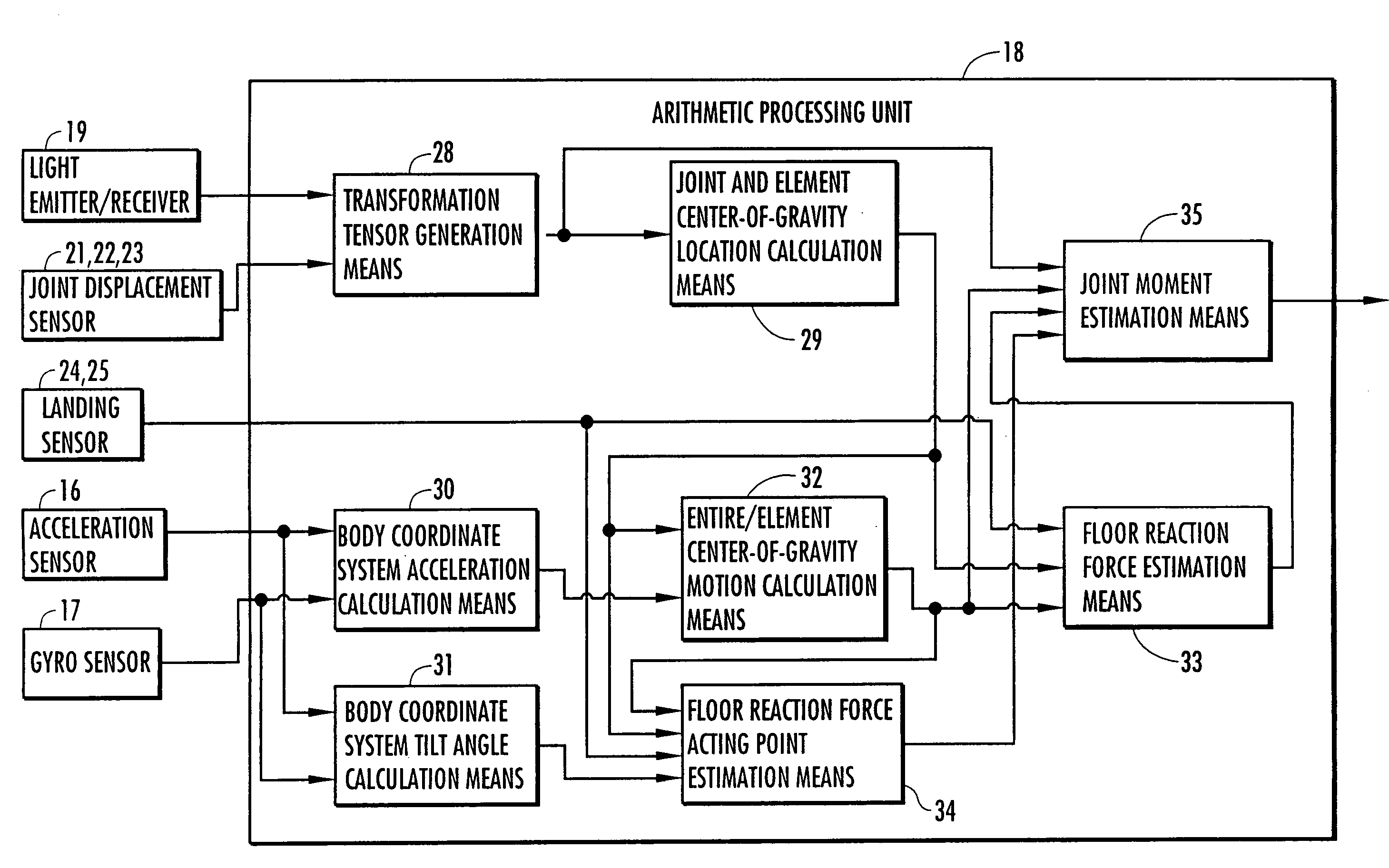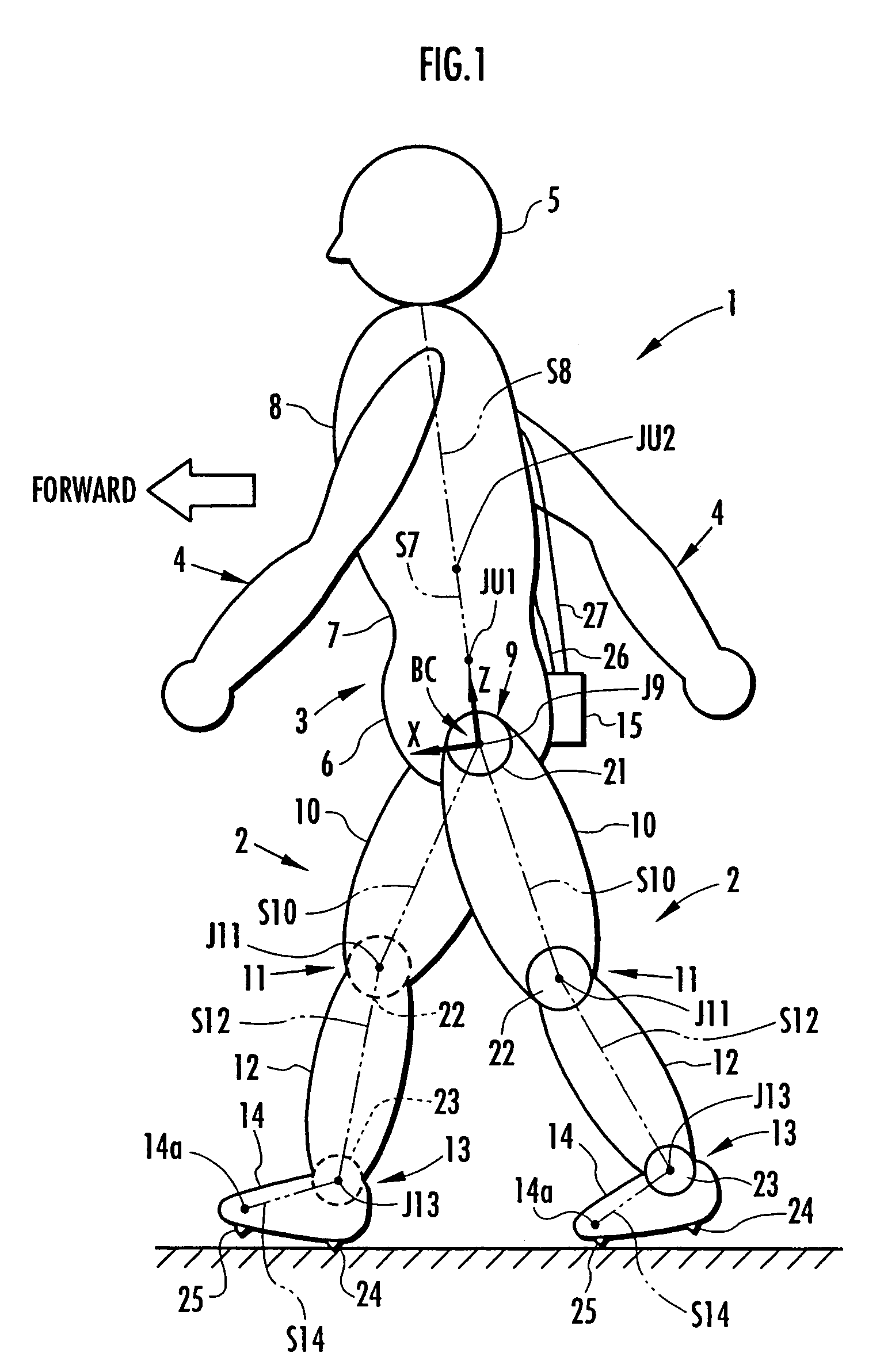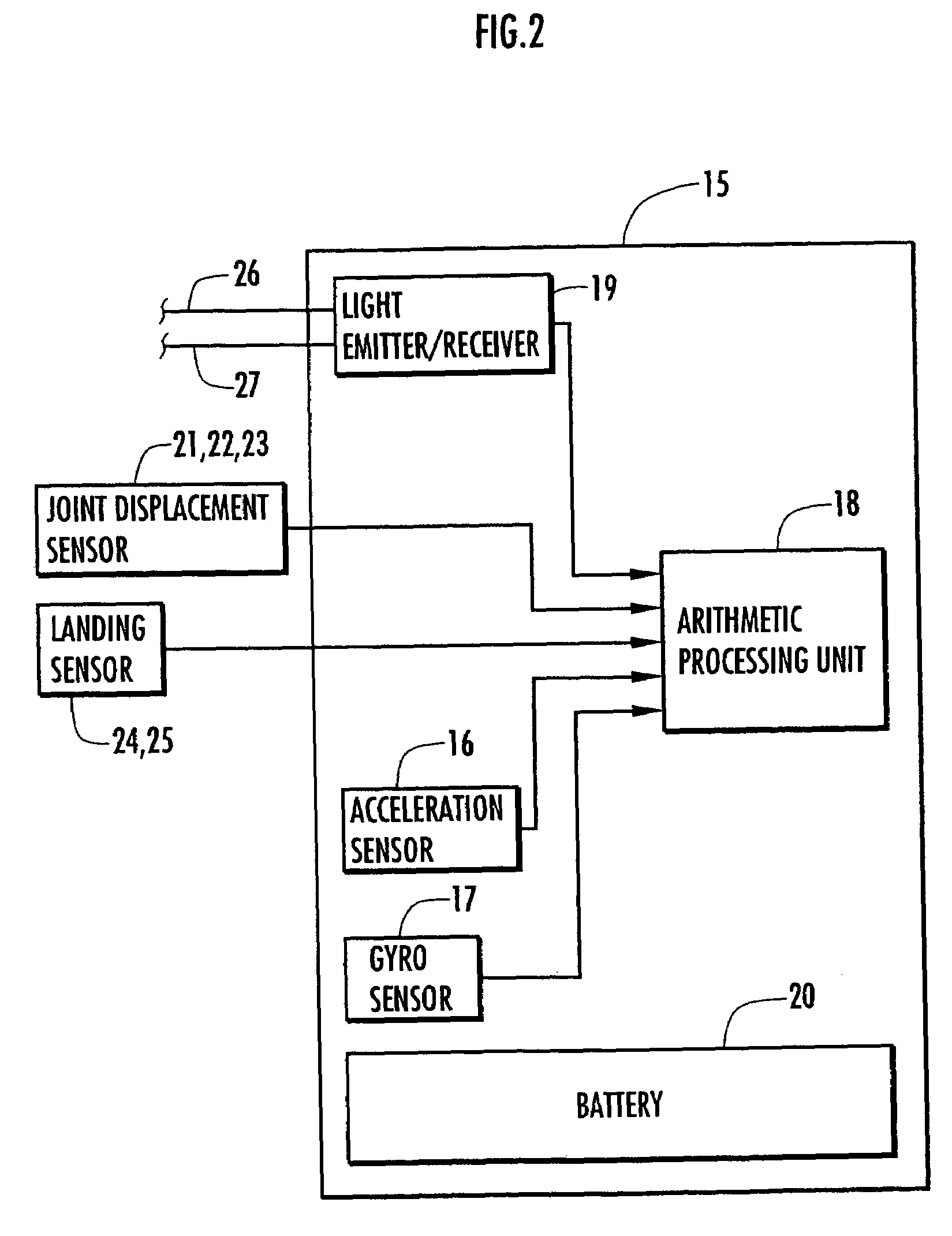Method of estimating joint moment of two-legged walking mobile body
a mobile body and joint moment technology, applied in the direction of electric programme control, instruments, program control, etc., can solve the problems of inhibiting the improvement of joint moment estimation accuracy, and the difficulty of grasping the tilt angle of a predetermined region of the two-legged walking mobile body in the absolute coordinate system with a high degree of accuracy, so as to increase the estimation accuracy of the joint moment. , the effect of increasing the estimation accuracy
- Summary
- Abstract
- Description
- Claims
- Application Information
AI Technical Summary
Benefits of technology
Problems solved by technology
Method used
Image
Examples
Embodiment Construction
[0040]A preferred embodiment of the present invention will now be described hereinafter with reference to FIG. 1 to FIG. 10. Referring to FIG. 1, there is typically shown a diagram of a general apparatus configuration in an embodiment to which the present invention is applied to a human being as a two-legged walking mobile body. As shown in FIG. 1, the human being 1 has a structure generally classified into a pair of right and left legs 2, 2, a body 3, a pair of right and left arms 4, 4, and a head 5. The body 3 is composed of a waist 6, an abdomen 7, and a chest 8. The waist 6 is coupled to the legs 2, 2 via a pair of right and left hip joints 9, 9 so as to be supported on the both legs 2, 2. Moreover, the arms 4, 4 are extended from the right and left sides of the chest 8 of the body 3 and the head 5 is supported on the upper end of the chest 8. The each leg 2 has a thigh 10 extending from the hip joint 9, a crus 12 extending from the end of the thigh 10 via a knee joint 11, and a...
PUM
 Login to View More
Login to View More Abstract
Description
Claims
Application Information
 Login to View More
Login to View More - R&D
- Intellectual Property
- Life Sciences
- Materials
- Tech Scout
- Unparalleled Data Quality
- Higher Quality Content
- 60% Fewer Hallucinations
Browse by: Latest US Patents, China's latest patents, Technical Efficacy Thesaurus, Application Domain, Technology Topic, Popular Technical Reports.
© 2025 PatSnap. All rights reserved.Legal|Privacy policy|Modern Slavery Act Transparency Statement|Sitemap|About US| Contact US: help@patsnap.com



